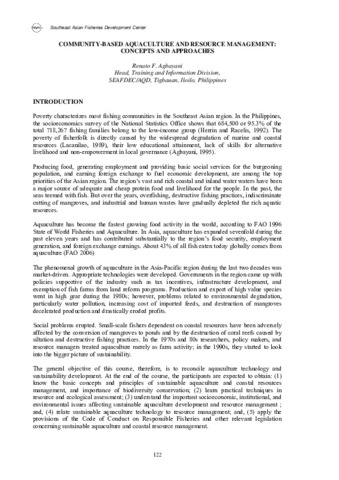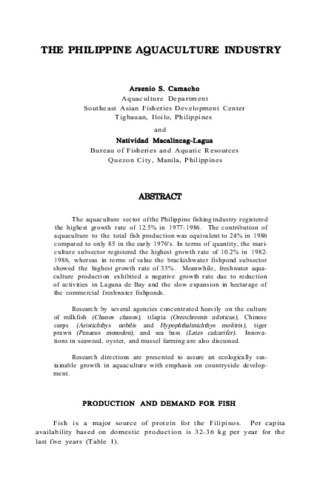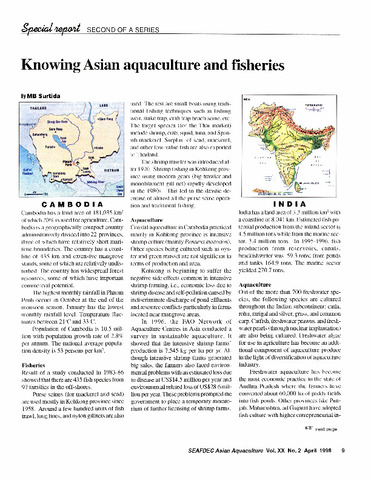Community-based aquaculture and resource management: Concepts and approaches
Share
Abstract
Poverty characterizes most fishing communities in the Southeast Asian region. In the Philippines, the socioeconomics survey of the National Statistics Office shows that 684,500 or 95.3% of the total 718,267 fishing families belong to the low-income group (Herrin and Racelis, 1992). The poverty of fisherfolk is directly caused by the widespread degradation of marine and coastal resources (Lacanilao, 1989), their low educational attainment, lack of skills for alternative livelihood and non-empowerment in local governance (Agbayani, 1995). [Extract]
Suggested Citation
Agbayani, R. F. (2008). Community-based aquaculture and resource management: Concepts and approaches. In Handbook on Community-based Aquaculture for Remote Rural Areas of Southeast Asia (pp. 122-130). Bangkok, Thailand: Secretariat, Southeast Asian Fisheries Development Center.
Subject
Related items
Showing items related by title, author, creator and subject.
-
Family farms in Vietnam
Aldon, Eva T. (Aquaculture Department, Southeast Asian Fisheries Development Center, 1997) -
The Philippine aquaculture industry
Camacho, Arsenio S.; Macalincag-Lagua, Natividad (Aquaculture Department, Southeast Asian Fisheries Development Center, 1988)The aquaculture sector of the Philippine fishing industry registered the highest growth rate of 12.5% in 1977-1986. The contribution of aquaculture to the total fish production was equivalent to 24% in 1986 compared to ... -
Knowing Asian aquaculture and fisheries
Surtida, Marilyn B. (Aquaculture Department, Southeast Asian Fisheries Development Center, 1998-04)This article is the second of four parts.





